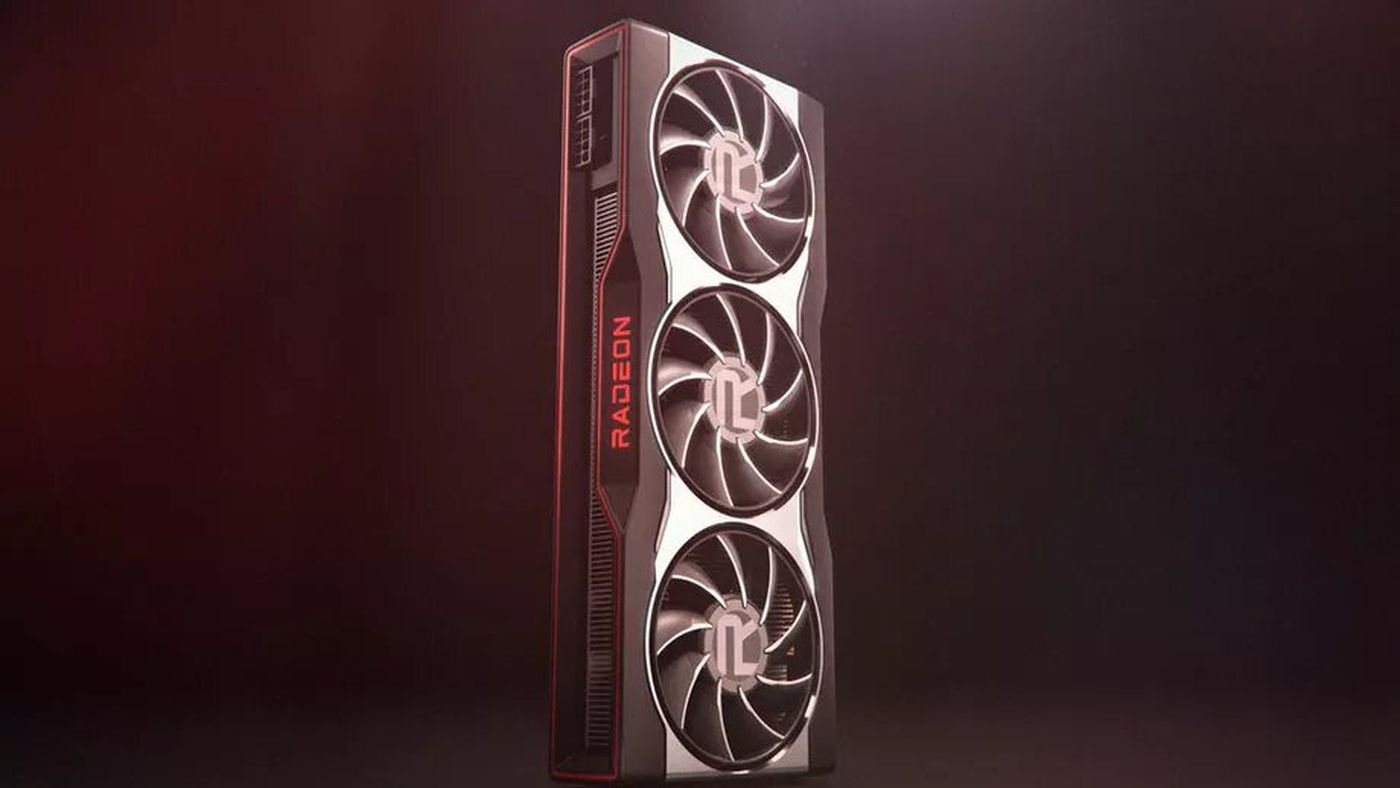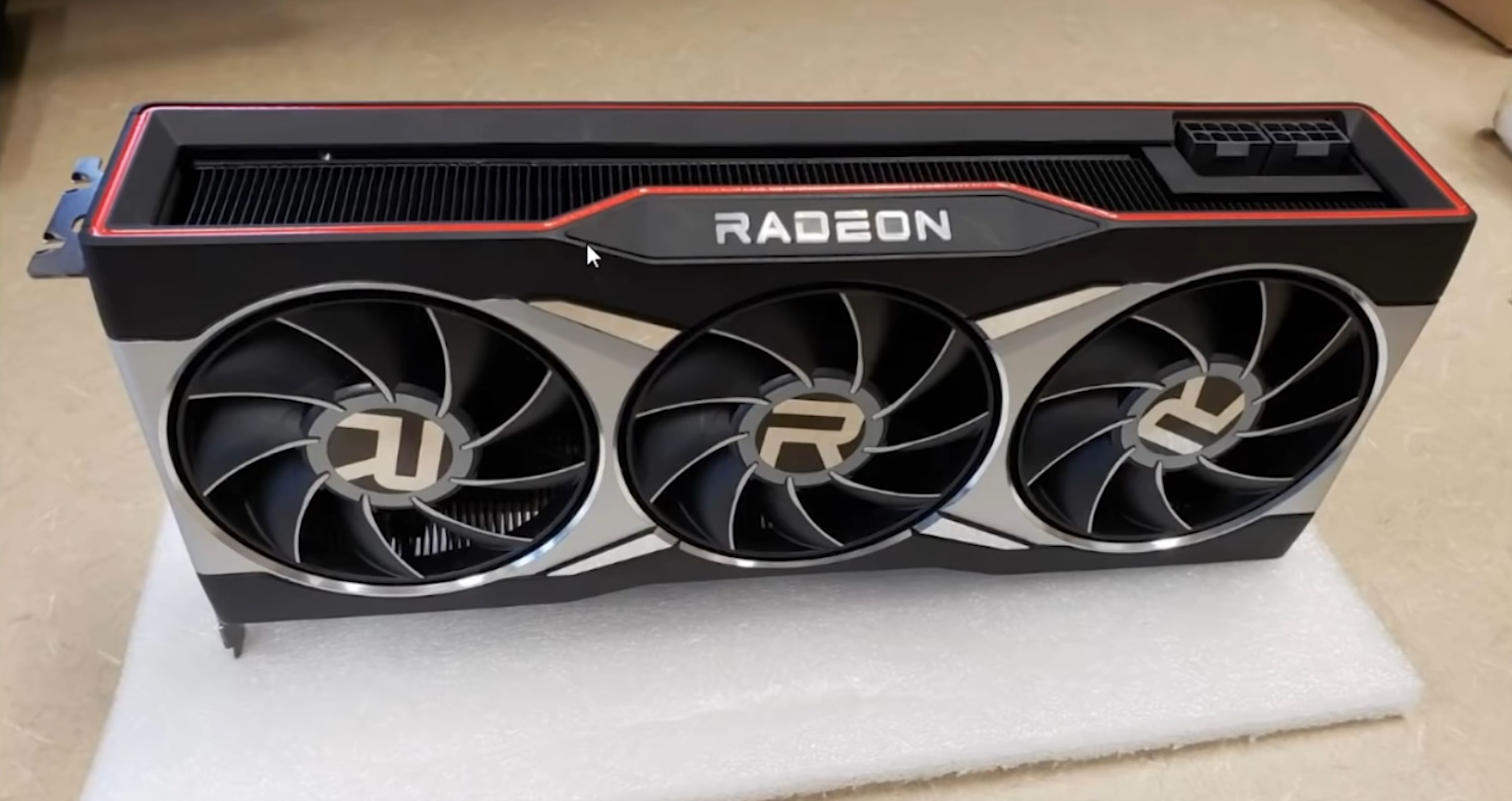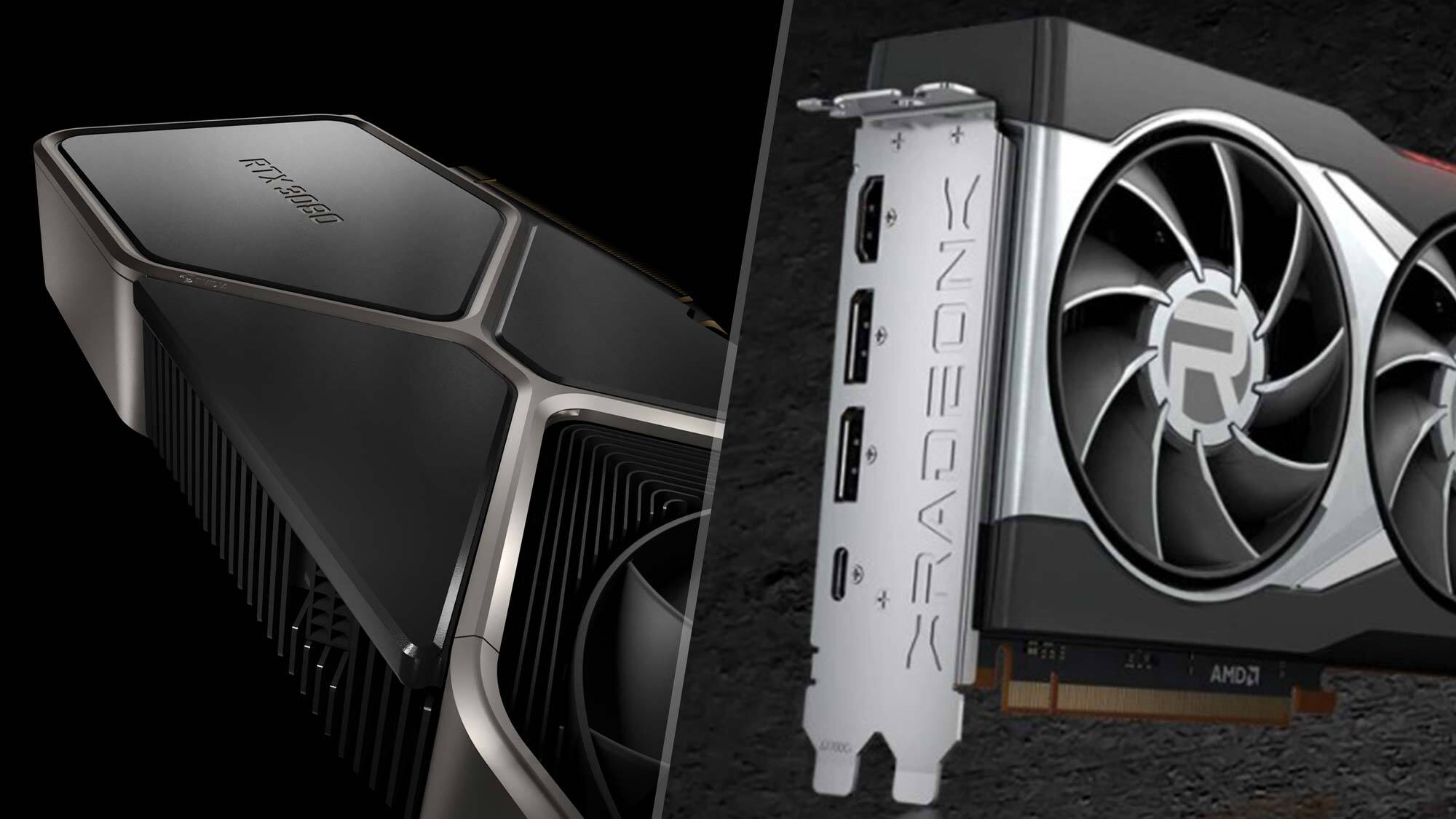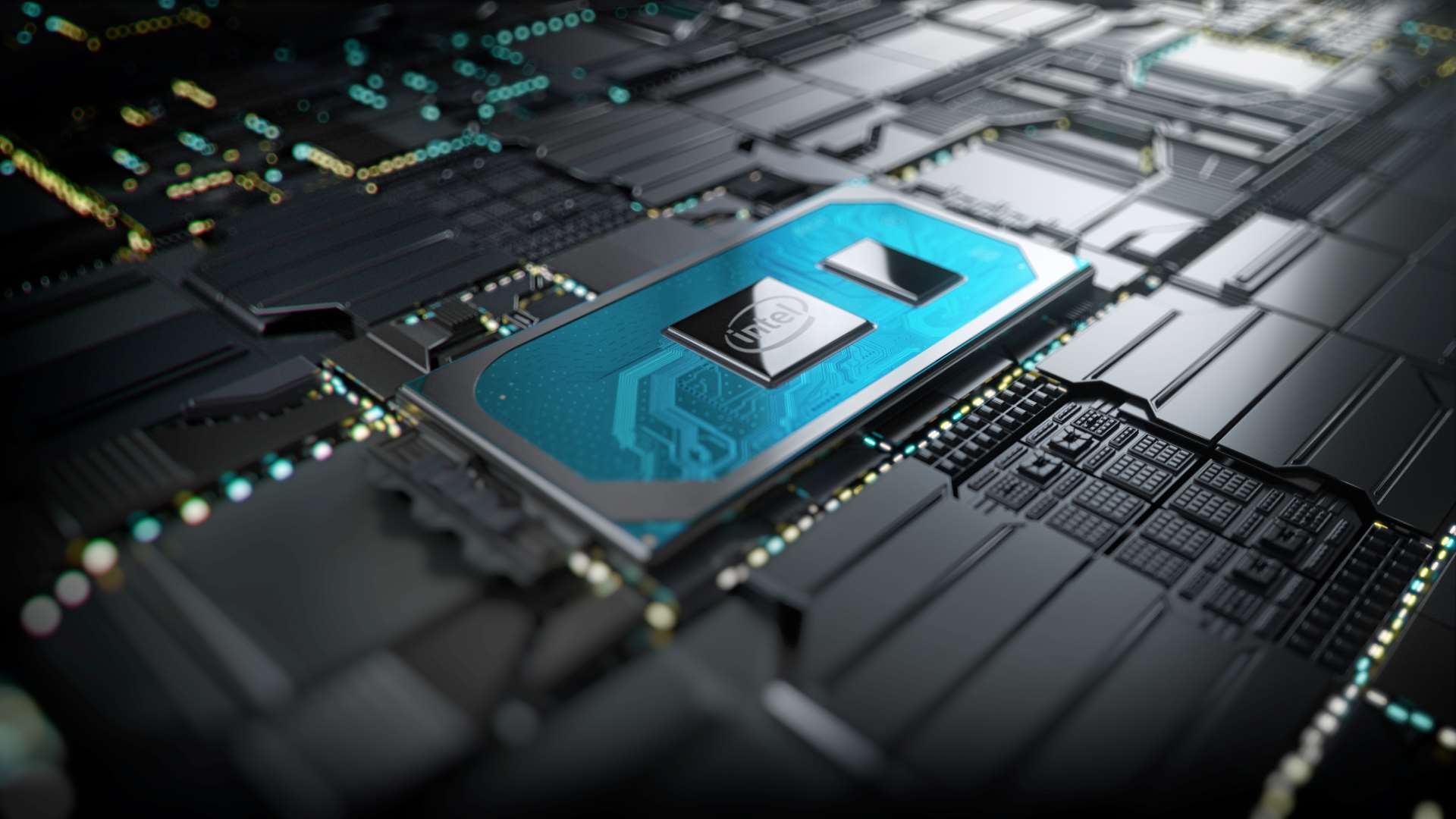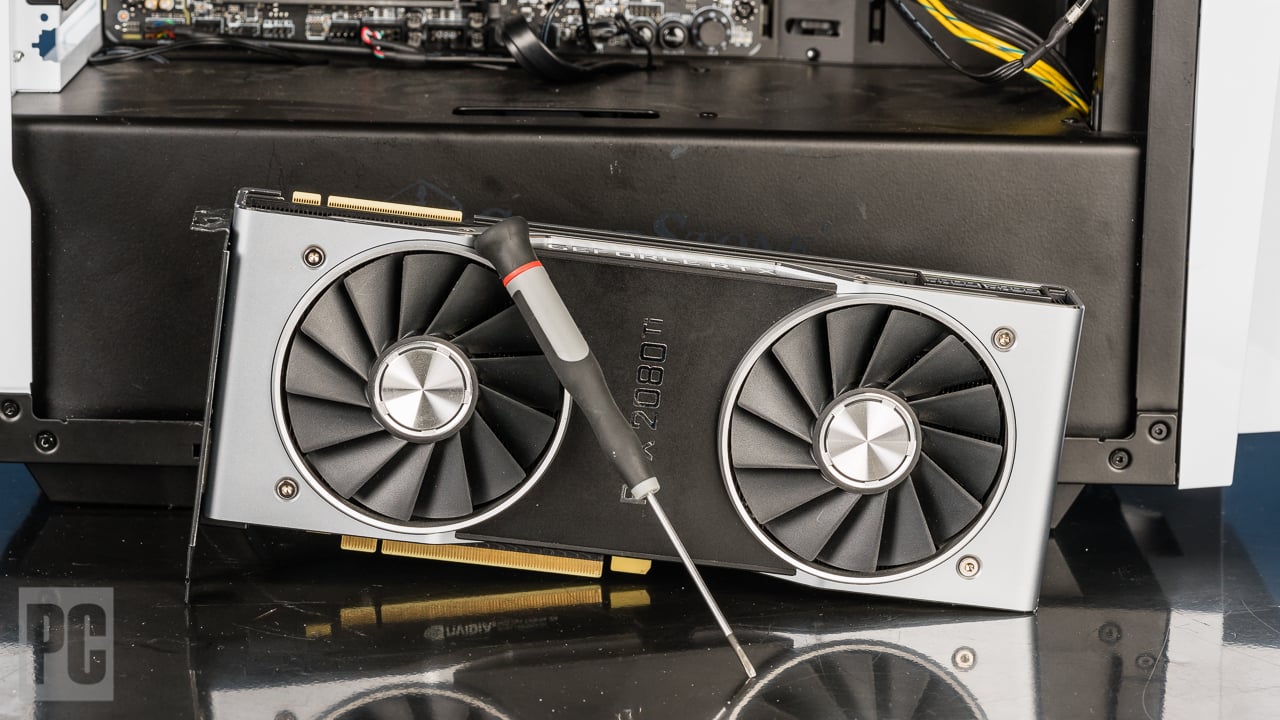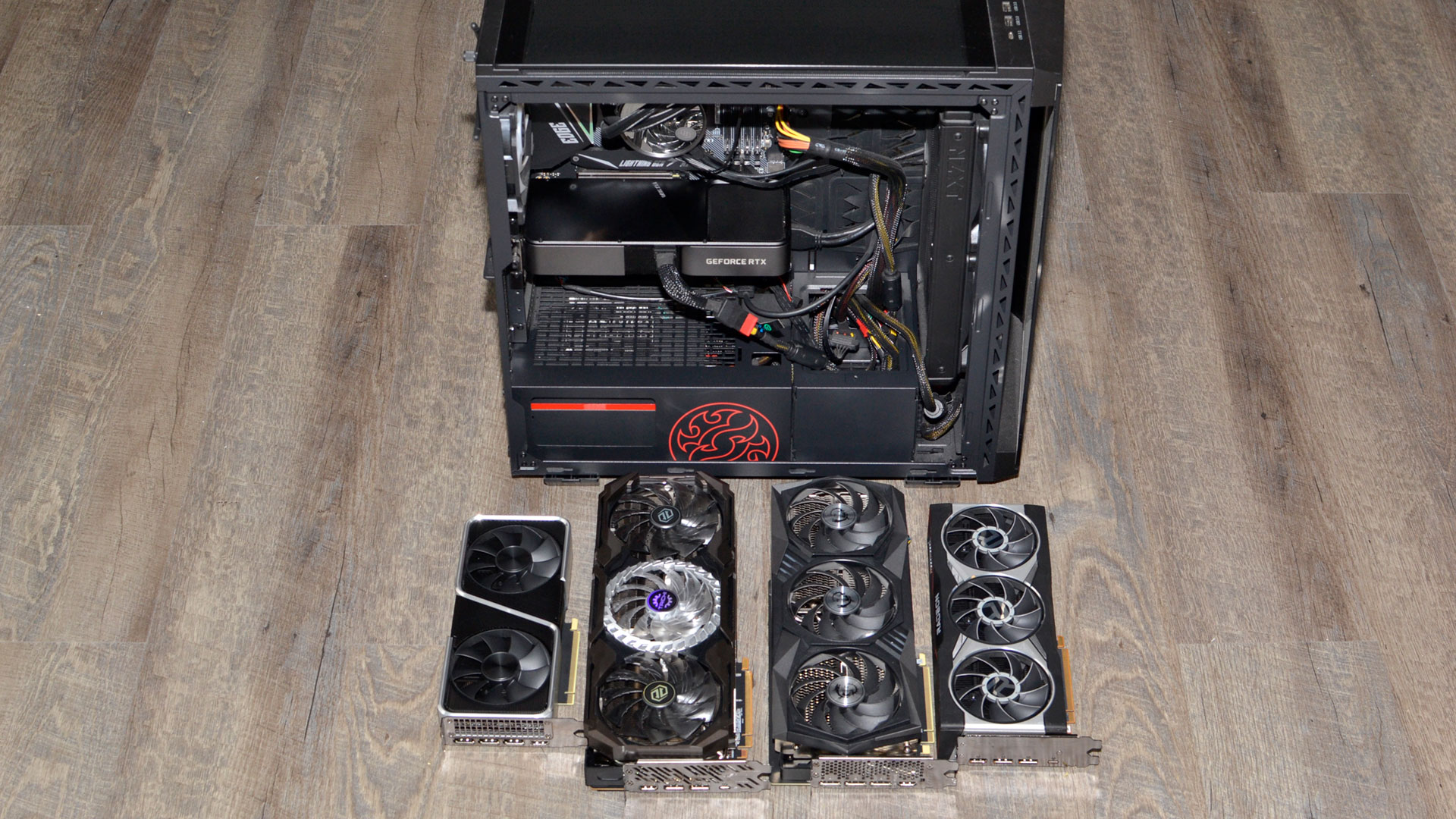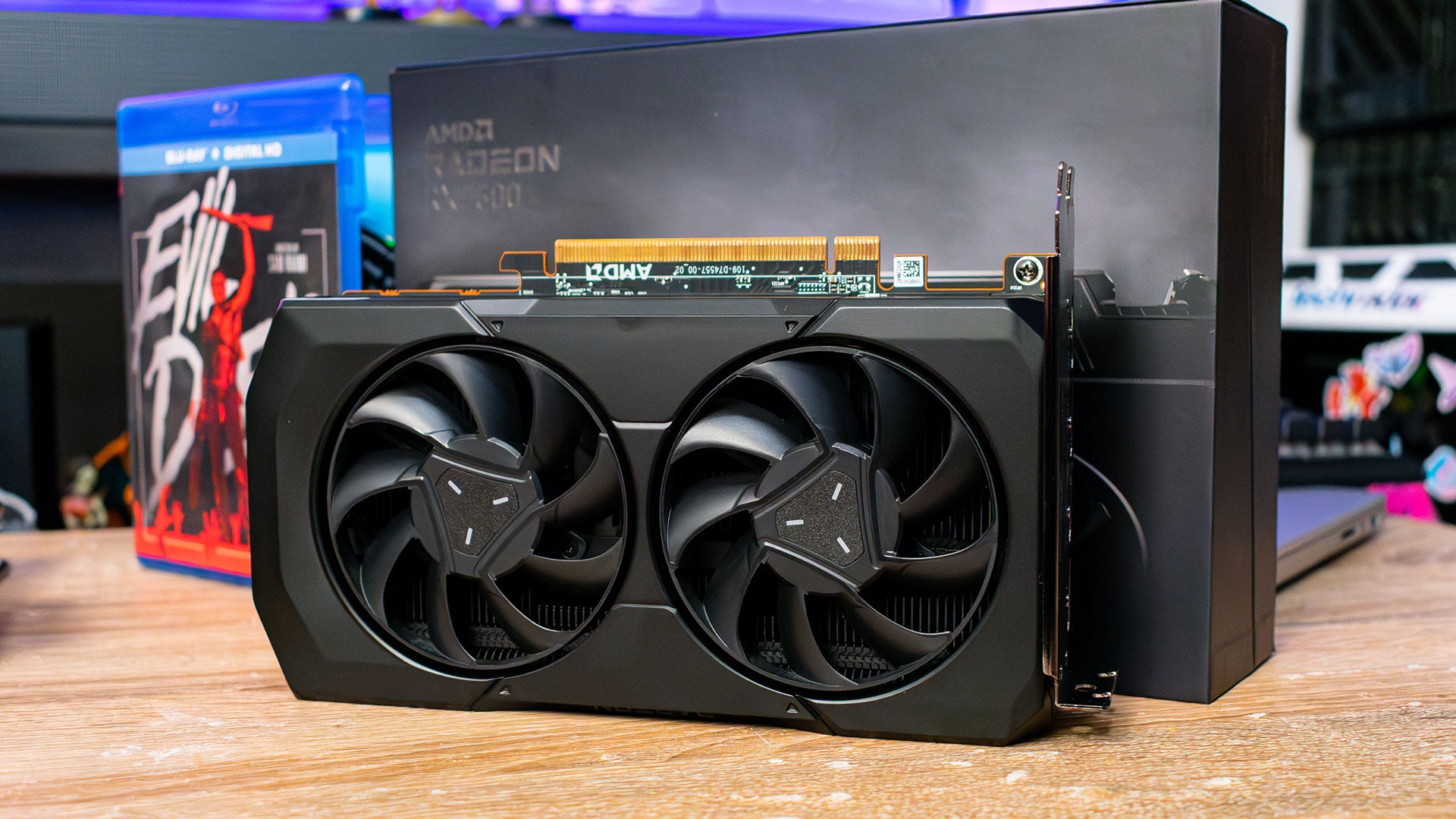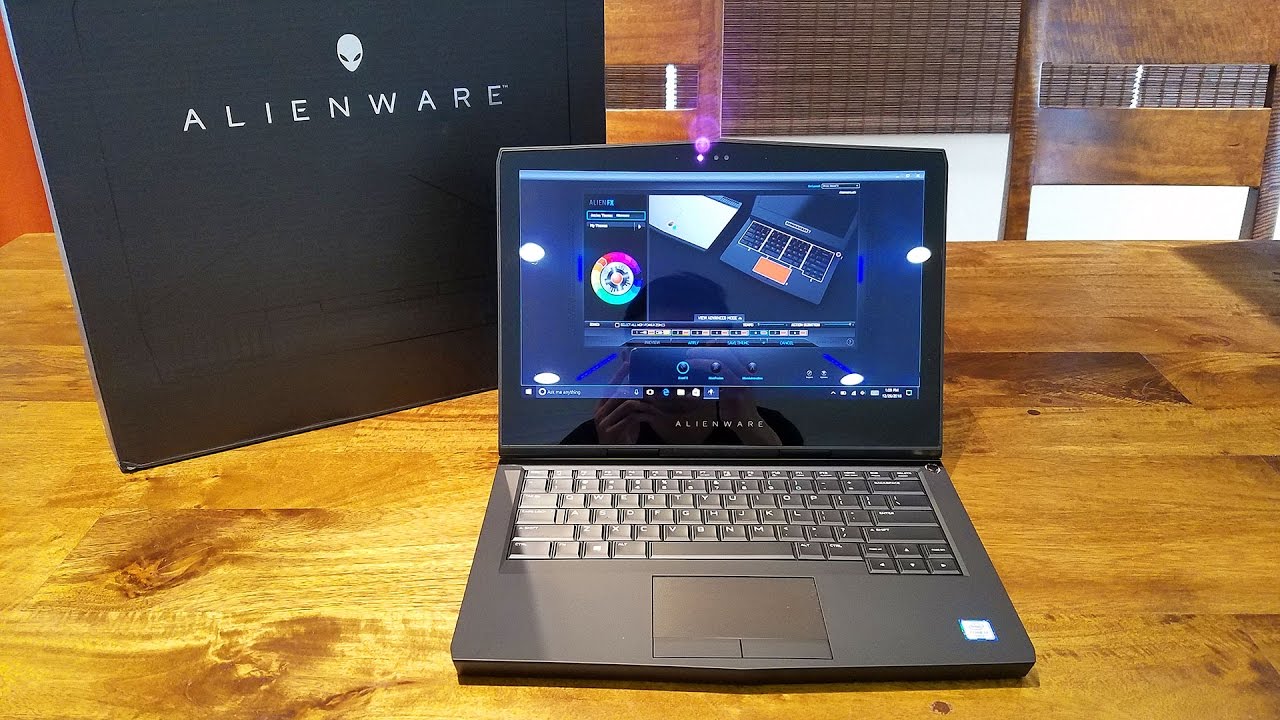Introduction
Graphics cards are an essential component of a computer system, especially for gamers and graphic design professionals. They are responsible for rendering visuals and processing complex graphics, making them crucial for a seamless and immersive experience. However, over time, the performance of your AMD graphics card can start to lag, leading to decreased frame rates, lower image quality, and overall frustration.
Fortunately, there are several steps you can take to improve the performance of your AMD graphics card and unlock its full potential. In this article, we will explore some practical tips and techniques that can help you optimize your card’s performance and enhance your overall gaming or design experience.
Before diving into the specific strategies, it’s important to note that every computer system is unique, and the effectiveness of these methods may vary. It’s always a good idea to monitor your system’s performance after implementing any changes to ensure they have the desired impact. So, without further ado, let’s explore how to improve your AMD graphics card performance.
Update Graphics Card Drivers
One of the first steps in improving the performance of your AMD graphics card is to ensure that you have the latest drivers installed. Graphics card drivers serve as the software interface between your operating system and the hardware, and updating them can often lead to significant performance improvements.
To update your AMD graphics card drivers, you can follow these steps:
- Open the AMD Radeon Settings software on your computer. If you don’t have it installed, you can download it from the official AMD website.
- In the Radeon Settings interface, click on the “Updates” tab.
- Check for any available driver updates. If there are updates available, follow the prompts to download and install them.
- After the installation is complete, restart your computer to apply the changes.
Updating your graphics card drivers can bring about various benefits, including better compatibility with the latest games and applications, enhanced stability, and improved performance optimizations. It is recommended to check for driver updates regularly, as new releases often address bugs and introduce performance optimizations specific to certain games or software.
Moreover, AMD frequently releases driver updates that include performance enhancements and new features. By keeping your drivers up to date, you can ensure that your AMD graphics card is operating at its best and taking advantage of the latest advancements.
Overall, updating your graphics card drivers is a simple yet effective method to improve the performance of your AMD graphics card. It can yield noticeable improvements in frame rates, reduce screen tearing, and provide a smoother and more enjoyable gaming or graphic design experience.
Adjust Graphics Card Settings
Optimizing the settings of your AMD graphics card can have a significant impact on its performance. By fine-tuning various parameters, you can strike a balance between visual quality and frame rates, ensuring a smooth and enjoyable gaming or design experience.
Here are some key settings that you can adjust to improve the performance of your AMD graphics card:
- Power Efficiency: In the AMD Radeon Settings software, navigate to the “Global Graphics” or “Global WattMan” tab. Look for the “Power Efficiency” option and disable it if enabled. This setting helps conserve energy but can limit the performance of your graphics card. Disabling it allows your card to operate at its maximum performance potential.
- Texture Filtering Quality: Under the “Global Graphics” or “Global WattMan” tab, find the “Texture Filtering Quality” setting and set it to the desired level. Higher quality settings can enhance visual fidelity but may impact performance. Adjust this setting based on your preferences and the performance capabilities of your graphics card.
- Anisotropic Filtering: Anisotropic filtering improves the clarity of textures in games. In the graphics card settings, find the “Anisotropic Filtering” option and set it to a value that balances image quality and performance. Lower values provide better performance but may result in less detailed textures.
- Anti-Aliasing: Anti-aliasing smooths jagged edges in games, but it can be computationally demanding. Adjust the anti-aliasing settings in the graphics card control panel based on your preferences and the capabilities of your system. Choosing lower levels of anti-aliasing or using advanced techniques like FXAA or TAA can help improve performance.
- VSync: Vertical Sync (VSync) synchronizes the frame rate of your game with the refresh rate of your monitor to reduce screen tearing. However, enabling VSync can also introduce input lag and potentially affect performance. Experiment with enabling or disabling VSync and choose the setting that provides the best balance between smooth visuals and responsive gameplay.
By adjusting these settings, you can optimize the performance of your AMD graphics card to suit your specific needs. It’s important to note that different games and applications may have their own settings within their respective options menus, so it’s a good idea to explore those as well. Fine-tuning these settings based on your preferences and hardware capabilities can result in smoother gameplay, better image quality, and an overall improved experience.
Optimize In-Game Graphics Settings
Aside from adjusting the settings in your AMD graphics card control panel, optimizing the in-game graphics settings can significantly impact the performance of your AMD graphics card. Each game offers a range of graphical options that can be adjusted to achieve the right balance between aesthetics and performance.
Here are some tips to help you optimize the in-game graphics settings:
- Resolution: Lowering the resolution can greatly improve performance. Choose a resolution that suits your monitor and desired frame rate. If necessary, you can reduce the resolution scale to further boost performance while sacrificing some visual fidelity.
- Texture Quality: Adjusting the texture quality setting can have a substantial impact on both performance and visual quality. Higher texture quality settings require more VRAM and processing power, so choose a setting that suits your system’s capabilities without sacrificing too much detail.
- Shadow Quality: Shadows can significantly affect performance. Consider lowering the shadow quality or disabling them entirely to improve frame rates. Alternatively, some games offer options for adjusting the shadow resolution, which can help maintain better performance without sacrificing all shadows.
- Effects and Post-Processing: Effects such as ambient occlusion, motion blur, and depth of field can enhance visuals but also consume GPU resources. Disable or lower these settings if they have a negative impact on performance without compromising your gameplay experience.
- View Distance: The draw distance or view distance setting determines how far objects are rendered in the game world. Lowering this setting can provide a performance boost by reducing the number of objects that need to be processed. Find a balance that maintains a good level of detail without causing performance issues.
- Advanced Graphics Options: Some games offer additional graphics settings that can further impact performance, such as particle density, foliage density, and reflection quality. Experiment with these settings to find a balance between performance and visual quality.
Optimizing in-game graphics settings is a process of trial and error. Every game and system configuration is different, so what works for one game may not work for another. It’s important to find the sweet spot where you achieve the best performance without sacrificing too much visual fidelity.
Lastly, keep in mind that some games offer built-in presets for graphics settings, such as “Low,” “Medium,” or “High.” These presets can be a good starting point, but don’t hesitate to customize them further to suit your preferences and hardware capabilities.
Keep Your System Cool
Adequate cooling is crucial for maintaining optimal performance and longevity of your AMD graphics card. When your graphics card heats up, it can lead to thermal throttling, where the card reduces its performance to prevent overheating. To ensure that your system stays cool, you can follow these tips:
- Clean Your Graphics Card: Over time, dust and debris can accumulate on the cooling fans and heatsink of your graphics card, impeding airflow and causing overheating. Regularly clean your graphics card using compressed air or a soft brush to remove any dust buildup.
- Improve Airflow: Good airflow inside your computer case is essential for dissipating heat. Ensure that your case has proper ventilation with fans strategically placed to circulate air. Consider adding additional fans or using liquid cooling solutions, if necessary.
- Monitor Temperature: Keep an eye on the temperature of your graphics card using monitoring software. If temperatures consistently exceed safe limits, it may be necessary to reduce the load on your graphics card by adjusting settings or considering hardware upgrades.
- Avoid Overclocking: Overclocking your graphics card can lead to increased heat generation. While overclocking can provide performance gains, it also puts more strain on the card’s cooling system. If you are already experiencing heating issues, it’s best to avoid overclocking until you have improved cooling.
- Proper Case Placement: Make sure your computer case is placed in a well-ventilated area with plenty of space around it to allow for proper airflow. Avoid placing your case in closed cabinets or cramped spaces that can restrict airflow and trap heat.
By implementing these cooling strategies, you can keep your system running at a comfortable temperature and prevent overheating. This helps your AMD graphics card maintain its performance capabilities and prolong its lifespan.
It’s important to note that if you are consistently experiencing overheating issues even after implementing these strategies, it may be necessary to consult with a professional or consider upgrading your cooling system to ensure efficient heat dissipation.
Clean and Defragment the Hard Drive
Regularly cleaning and defragmenting your hard drive can have a positive impact on the overall performance of your AMD graphics card. Over time, files and data can become fragmented and scattered across different areas of the hard drive, leading to slower read and write speeds. Here’s how you can optimize your hard drive:
- Clean Up Unnecessary Files: Use disk cleanup tools or software to remove unnecessary files and free up storage space on your hard drive. Deleting temporary files, clearing browser caches, and uninstalling unused applications can help improve storage efficiency.
- Defragment Your Hard Drive: Defragmentation reorganizes the data on your hard drive, making it easier for your system to access and read files. Windows has a built-in defragmentation tool that can be accessed through the Control Panel. Run the tool periodically to optimize your hard drive’s performance.
- Consider an SSD Upgrade: If you’re still using a traditional hard disk drive (HDD), consider upgrading to a solid-state drive (SSD). SSDs offer faster read and write speeds, resulting in improved overall system performance, including faster loading times for games and applications.
By regularly cleaning up and defragmenting your hard drive, you can ensure that your AMD graphics card and other components have quick access to the necessary files, reducing loading times and improving overall system responsiveness. Additionally, upgrading to an SSD can provide a significant boost in performance, as they are inherently faster and more reliable than traditional HDDs.
It’s worth mentioning that cleaning and defragmenting your hard drive will not directly impact the performance of your AMD graphics card. However, by optimizing your hard drive, you create a more efficient system that can facilitate smoother and faster data access, leading to an improved overall computing experience.
Close Unnecessary Background Processes
Having unnecessary background processes running while using your AMD graphics card can consume valuable system resources and affect its performance. These processes can include applications, utilities, and services that are not essential for your current tasks. By closing unnecessary background processes, you can free up system resources and ensure that your AMD graphics card has the necessary power to deliver optimal performance.
Here are some steps you can take to close unnecessary background processes:
- Task Manager: Press Ctrl + Shift + Esc to open the Task Manager. In the “Processes” tab, you can see a list of currently running processes. Identify processes that are using a significant amount of system resources and are not essential for your current tasks. Right-click on those processes and choose “End Task” to close them.
- Startup Programs: Some applications automatically start when you boot up your computer, consuming resources even when you don’t actively use them. To manage startup programs, open the Task Manager, go to the “Startup” tab, and disable any programs that you don’t need to run at startup.
- Services: Certain services running in the background can also consume system resources. To manage services, press Win + R to open the Run dialog box, type “services.msc“, and press Enter. In the Services window, you can identify and disable unnecessary services that may be impacting performance.
- Clean Up Background Applications: Close any unnecessary applications that are running in the background. These can include chat clients, cloud storage sync utilities, or any other programs that are not essential for your current tasks.
By closing unnecessary background processes, you provide your AMD graphics card with the resources it needs to perform at its best. This can lead to better frame rates, improved responsiveness, and a smoother gaming or design experience.
Keep in mind that some background processes may be necessary for the proper functioning of your operating system or specific applications. Be cautious when closing processes and only terminate those that you are certain are not vital for your system’s operation or your current tasks.
Remember to periodically review and manage your background processes to ensure optimal performance. Closing unnecessary processes can also help conserve battery life on laptops and improve overall system stability.
Overclock Your Graphics Card
If you’re looking to squeeze out some extra performance from your AMD graphics card, overclocking can be a viable option. Overclocking involves pushing the clock speeds of your graphics card beyond their factory defaults to achieve higher frame rates and improved performance. However, it’s important to note that overclocking can void your warranty and carries some risks, such as increased heat generation and potential instability.
Here are some steps to overclock your AMD graphics card:
- Research: Before attempting to overclock your graphics card, do thorough research to understand the process and potential risks. Familiarize yourself with overclocking techniques specific to your AMD graphics card model.
- Overclocking Software: Download and install a reliable overclocking software that is compatible with your AMD graphics card. Examples include MSI Afterburner, EVGA Precision X1, or AMD’s own Radeon Software.
- Start Slowly: Begin by increasing the clock speeds and memory speeds in small increments. Test the stability of your system and monitor the temperatures. Gradually increase the speeds until you find a stable and optimal setting.
- Stress Testing: To ensure the stability of your overclocked graphics card, perform stress tests using benchmarking software such as Unigine Heaven or 3DMark. Monitor temperatures and watch for any visual artifacts or system crashes that may indicate instability.
- Temperature Management: Overclocking can generate more heat, so it’s crucial to keep your graphics card temperatures in check. Make sure your cooling system is adequate and consider increasing fan speeds or investing in a more robust cooling solution if necessary.
- Monitor and Adjust: After overclocking, continuously monitor the performance and temperatures of your graphics card. If you encounter any stability issues or notice excessive heat, you may need to dial back your overclocking settings.
Overclocking your AMD graphics card can potentially provide noticeable improvements in performance, resulting in higher frame rates and smoother gameplay. However, it’s essential to exercise caution and ensure that you undertake this process responsibly. Always remember to take into account the limitations and specifications of your particular graphics card model.
Lastly, it’s recommended to consult online resources, such as overclocking guides and forums, for specific tips and advice related to your AMD graphics card model. This can help you better understand the potential gains and risks associated with overclocking, ensuring that you make informed decisions throughout the process.
Monitor Performance with Benchmarking Tools
Monitoring the performance of your AMD graphics card is crucial to understand its capabilities and identify areas for improvement. Benchmarking tools provide valuable insights into the performance of your graphics card by measuring frame rates, rendering times, and other relevant metrics. These tools allow you to assess the impact of different settings, optimizations, and overclocking on your system’s performance.
Here are a few popular benchmarking tools you can use to monitor the performance of your AMD graphics card:
- 3DMark: Developed by UL, 3DMark provides comprehensive benchmarking for gaming PCs, including graphical and computational performance tests. It offers various tests like Time Spy, Fire Strike, and Sky Diver, allowing you to compare your system’s performance against others.
- Unigine Heaven: Unigine Heaven is a visually stunning benchmark tool that stresses your graphics card with demanding scenes, enabling you to evaluate its performance under heavy loads. It provides in-depth statistics and real-time details for accurate performance monitoring.
- Fraps: While primarily known for its real-time frame rate monitoring, Fraps also offers benchmarking capabilities. It allows you to record frame rates during gameplay and provides performance metrics that can be used to assess the impact of different settings on your graphics card’s performance.
- Radeon Software: If you have an AMD graphics card, the Radeon Software includes a built-in performance monitoring feature called Radeon Overlay. It provides real-time performance statistics, including GPU utilization, temperature, and frame rates, allowing you to monitor your card’s performance during gameplay.
Using benchmarking tools, you can establish a baseline for your graphics card’s performance and evaluate the effectiveness of any optimizations or tweaks you make. By comparing results before and after performance optimizations, you can determine which changes have yielded improvements and make informed decisions about further enhancements.
It’s important to note that benchmarking tools can push your graphics card to its limits, generating higher temperatures and power consumption. Ensure your cooling system is adequate and monitor temperatures during benchmarking to prevent overheating issues.
Remember that benchmark scores can vary depending on factors like hardware configuration, software settings, and even driver versions. It’s best to compare your results with similar systems to gain a broader perspective on your graphics card’s performance.
Regularly monitoring your AMD graphics card’s performance with benchmarking tools empowers you to make informed decisions about optimizing settings, overclocking, and hardware upgrades. Utilizing these tools assists in maximizing the potential of your graphics card and ensuring an optimal gaming or design experience.
Use Performance-Enhancing Software
In addition to hardware optimizations, there are various performance-enhancing software tools and utilities that can help improve the performance of your AMD graphics card. These tools provide additional optimizations, fine-tuning options, and performance monitoring capabilities that can further enhance your gaming or design experience. Here are some performance-enhancing software options:
- AMD Radeon Software: AMD provides a robust software suite called Radeon Software that includes features like Radeon Chill, Radeon Boost, and Radeon Anti-Lag. These features help optimize your graphics card’s performance by dynamically adjusting frame rates, reducing input lag, and enhancing responsiveness.
- MSI Afterburner: MSI Afterburner is a popular third-party overclocking utility that works with both AMD and NVIDIA graphics cards. It allows you to fine-tune clock speeds, voltages, and fan speeds to maximize performance. Afterburner also offers an on-screen display for real-time monitoring of performance metrics.
- Razer Cortex: Razer Cortex is a performance-enhancing software that optimizes system settings and prioritizes resources for gaming. It provides features like Game Booster, which helps streamline your system for smoother gameplay, and integrated game launching for easier access to your favorite games.
- Game Mode (Windows 10): If you’re using Windows 10, the built-in Game Mode can help improve gaming performance. When enabled, Game Mode prioritizes system resources for the game you’re currently playing, minimizing background processes and enhancing overall performance.
- Graphics Card Manufacturer Software: Many graphics card manufacturers, such as ASUS, Gigabyte, and EVGA, provide their own software utilities for optimizing performance. These utilities often include features for overclocking, monitoring, and adjusting graphics card settings to achieve the best performance.
It’s important to note that while performance-enhancing software can offer significant optimizations, their effectiveness can depend on various factors, including your specific hardware configuration and the applications or games you use. Additionally, it’s crucial to keep these software tools updated to benefit from the latest optimizations and bug fixes.
When using any performance-enhancing software, it’s recommended to monitor the impact on system stability and temperature. Sometimes, aggressive optimizations or settings can put additional strain on your graphics card, leading to increased heat generation or potential stability issues. Therefore, it’s essential to find the right balance based on your hardware capabilities and tolerances.
By utilizing performance-enhancing software, you can fine-tune and optimize your AMD graphics card to achieve the best possible performance while maintaining stability and safety. Experiment with different settings and features provided by these software tools to find the configuration that works best for your specific needs and hardware.
Conclusion
Improving the performance of your AMD graphics card is essential for maximizing your gaming or design experience. The tips and techniques discussed in this article provide practical steps to optimize your AMD graphics card and unleash its full potential. By following these recommendations, you can achieve higher frame rates, improved image quality, and a smoother overall performance.
We started by highlighting the importance of updating your graphics card drivers to ensure compatibility and take advantage of performance enhancements. Adjusting the graphics card settings, both in the control panel and within games, allows you to find the right balance between visual quality and performance. Additionally, keeping your system cool through proper cooling techniques, regular cleaning, and managing unnecessary background processes can prevent overheating and maintain optimal performance.
Furthermore, optimizing in-game graphics settings, cleaning and defragmenting the hard drive, and utilizing benchmarking tools provide insight into system performance and uncover areas for improvement. Finally, performance-enhancing software offers additional optimizations and monitoring capabilities to fine-tune your AMD graphics card’s performance.
It’s important to note that not every method or tweak may yield the same results for every system. Each computer configuration is unique, and the effectiveness of these strategies may vary. It’s recommended to experiment with different techniques and monitor the impact on your system to find the optimal settings for your specific hardware and preferences.
By employing these strategies and continuously optimizing your AMD graphics card’s performance, you can elevate your gaming or design experience to new heights. Remember to exercise caution when making any changes, and ensure that you understand the risks associated with overclocking or altering system settings.
With a well-optimized AMD graphics card, you can immerse yourself in the world of gaming or bring your creative visions to life with smooth and visually stunning graphics. Don’t hesitate to explore these performance improvement techniques and unlock the full potential of your AMD graphics card.







